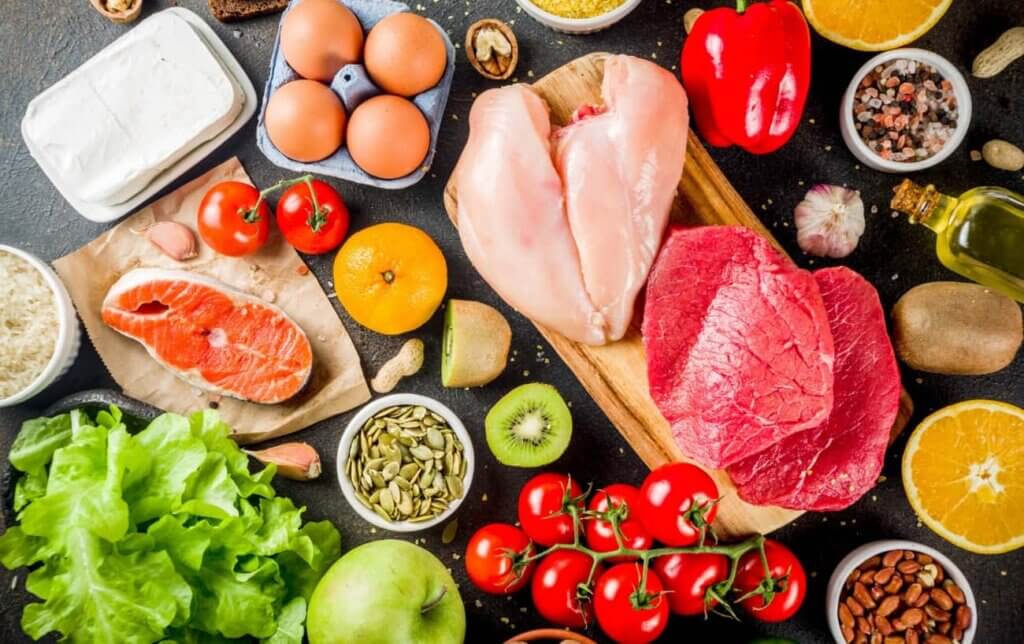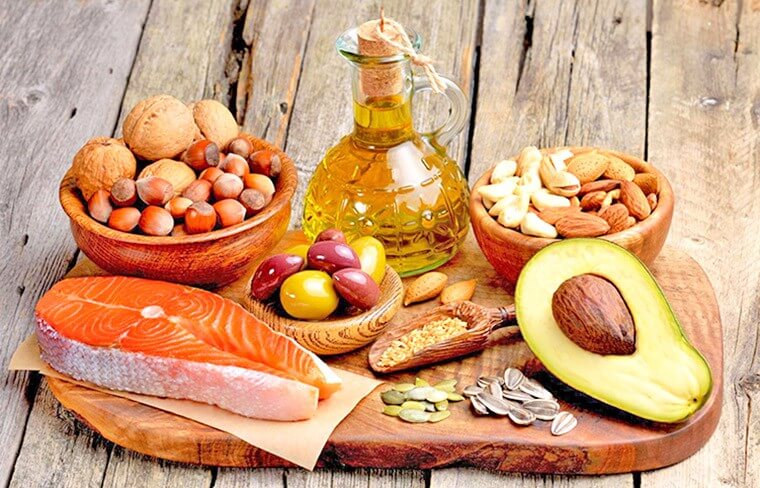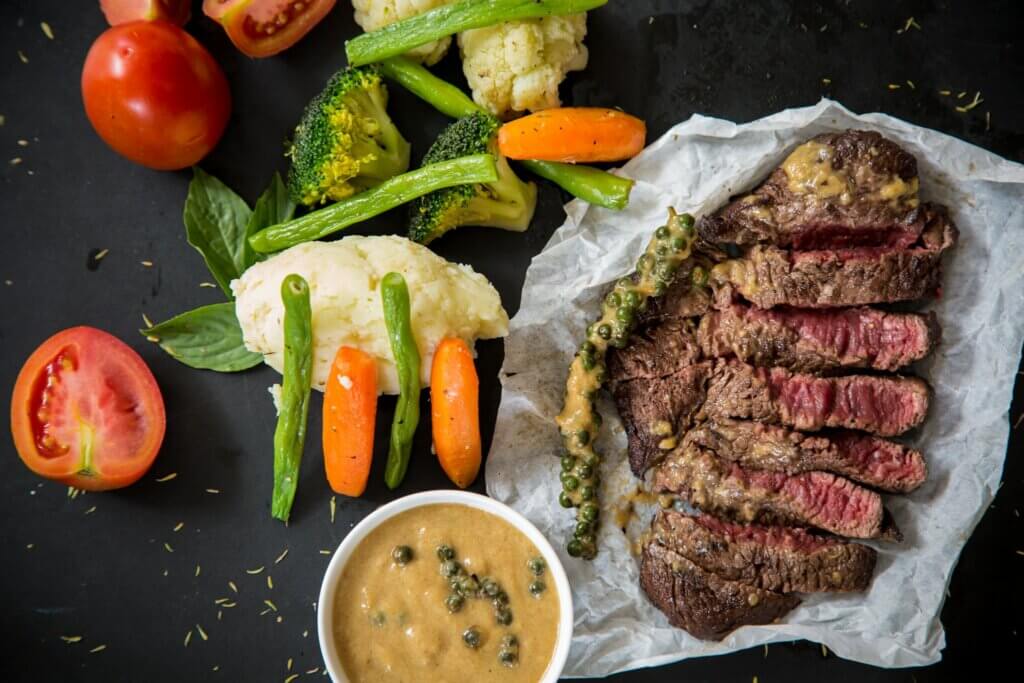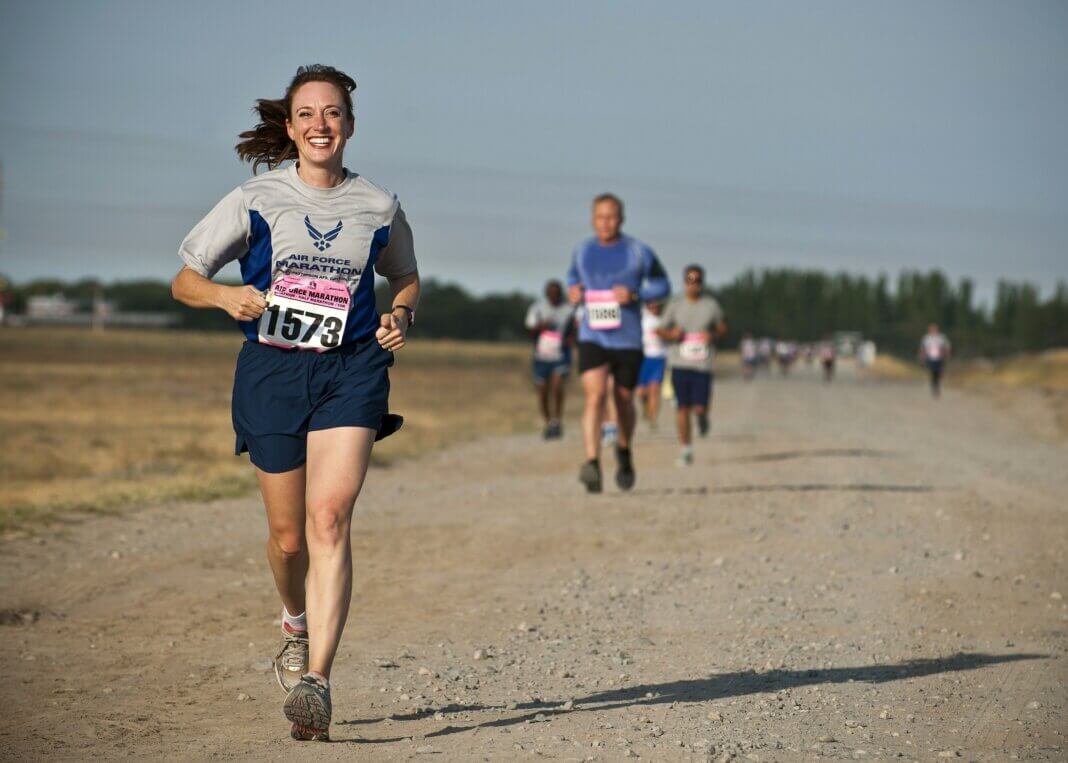For runners, diet and nutrition are crucial not only for maintaining good health but also to promote peak performance. Proper nutrition and hydration can make or break a workout or race and affect how you feel, work, and think.
One of the most common questions new runners have is what they should eat before, during, and after running. While everyone is different (so it’s important to pay attention to how you feel and make adjustments), there are some basic guidelines for a runner’s diet that can help you get started.
Nutrients Runners Need
Eating right can help you have the energy you need during your runs. A balanced diet for healthy runners should include all the essentials: carbohydrates, protein, fats, vitamins, and minerals.

Carbohydrates
Without a doubt, carbs are the best source of energy for athletes. Carbohydrates should make up about 60% to 65% of total calorie intake for most runners. However, some runners (such as sprinters) may need more than 70%, and some endurance runners may need as little as 50%.
Research has shown that our bodies work more efficiently with carbs than they do with proteins or fats for both quick and long-lasting energy. Good choices include:
- Fruit
- Potatoes
- Starchy vegetables
- Steamed or boiled rice
- Whole grain bread
- Whole grain pasta
Whole-grain foods are less processed, meaning they retain more of the nutrition the grain naturally provides. Choosing whole-grain pasta over white, for example, provides you with more nutrients, including B vitamins (niacin, thiamine, folate), fiber, zinc, iron, magnesium, and manganese. Whole grains also contain fiber, which can help you feel fuller longer.
Protein
Protein is used for some energy and to repair tissue damaged during training. In addition to being an essential nutrient, protein keeps you feeling full longer, which helps if you’re trying to lose weight.

According to USDA guidelines, protein should make up about 10% to 35% of your daily intake. But exercise physiologists often use a formula based on weight to determine a more accurate amount.
Endurance athletes need more protein than sedentary individuals. Runners, especially those running long distances, should consume 1.2 to 1.4 grams of protein per kilogram of body weight per day. Try to concentrate on protein sources that are low in fat and cholesterol, such as:
- Beans
- Eggs
- Fish
- Poultry
- Lean meats
- Low-fat dairy products
- Whole grains
Fat
A high-fat diet can quickly pack on the pounds, so try to ensure that no more than 20% to 35% of your total diet comes from fats. Stick to foods low in saturated fats and cholesterol.
Foods such as nuts, oils, and cold-water fish provide essential fats omega-3s which are vital for good health and help prevent certain diseases. The National Institutes of Health recommends 500 mg to 1,600 mg of omega-3 fatty acids daily (1,100 mg for females ages 18 and up and 1,600 mg for adult males).

Vitamins and Minerals
Runners don’t get energy from vitamins, but these micronutrients are still essential. Exercise may produce free radicals, which can damage cells, and vitamins C and E can neutralize these substances. Minerals are also of particular importance when it comes to running. Important ones include:
- Calcium: A calcium-rich diet is essential for runners to prevent osteoporosis and stress fractures. Good sources of calcium include low-fat dairy products, calcium-fortified juices, dark leafy vegetables, beans, and eggs. Calcium guidelines vary. Most adults between the ages of 19 and 50 should aim for 1,000mg/day. Women over 50 need 1,200 mg/day. Younger runners (ages 9 to 18) need 1,300 mg/day.
- Iron: You need this nutrient to deliver oxygen to your cells. If you don’t get enough iron in your diet, you’ll feel weak and fatigued, especially when you run. Men aged 19 to 50 should consume 8 mg of iron per day, while women of the same age should be consuming 18 mg. Good natural sources of iron include lean meats, leafy green vegetables, nuts, shrimp, and scallops.
- Sodium and other electrolytes: Small amounts of sodium and other electrolytes are lost through sweat during exercise. Usually, electrolytes are replaced if you follow a balanced diet. But if you find yourself craving salty foods, it may be your body’s way of telling you to get more sodium. Try drinking a sports drink or eating some pretzels after exercise. Particularly if you’re running longer than 90 minutes, you need to replace some of the electrolytes you’re losing through sweat by drinking sports drinks or taking in salt during your runs.

Timing Your Pre-Run Meals and Snacks
When you begin a run, you should feel neither starved nor stuffed. You don’t want to eat immediately before running because it could lead to cramping or annoying side stitches. But running on an empty stomach may mean you’re drained of energy and feeling exhausted during your runs.
It takes time or every runner to figure out what and when to eat before a run. Research has yielded mixed results. For example, one study found that consuming carbs within one hour before exercise could impair performance compared to eating two to three hours before training. But the authors also noted that other studies showed a performance benefit to allowing more time between eating and training.
Another study noted that snacks or meals high in carbohydrates are commonly recommended one to four hours before higher-intensity, longer-duration exercise. But that study also suggests that what you eat before training depends on what you’ve consumed in your diet in the days preceding exercise.
If you eat a very big meal, you should wait at least two hours before running. This is especially true if you eat foods that take a long time to digest, such as greasy, fatty, or fried foods (though it’s best to avoid these altogether before running).
If you eat something smaller, you should be fine to run about an hour after you eat, depending on your meal choice. But everyone’s digestive system is different, so experiment to determine what works for you.
What to Eat Before a Run
Choose something high in carbohydrates and lower in fat, fiber, and protein. Some examples include:
- A bagel with peanut butter
- A banana and an energy bar
- A bowl of cold cereal with a cup of milk
- Oatmeal with berries
- A turkey and cheese sandwich on whole-wheat bread
If you decide to start on empty, you should have enough energy stores to last for a shorter run. But if you have time for a light snack, a piece of toast with jam or half of an energy bar can be a good choice. Focus on carbohydrates and easy-to-digest foods.
If you run in the evening and it’s been a few hours since lunch (but you haven’t had dinner yet), try eating a healthy 100-calorie snack about 60 to 90 minutes before a run, unless you are used to something else. If it is within 60 minutes of a run, choose an easy carbohydrate that doesn’t exceed 30 grams of carbohydrates, like a banana.
What to Eat
- Whole grains (breads, pasta, quinoa)
- Lean proteins (eggs, salmon)
- Fresh fruit (bananas, berries, oranges)
- Low-fat yogurt
- Peanut butter
- Almonds
What to Avoid
- Sugar-filled drinks (especially soda)
- Spicy food
- High-fiber veggies (e.g., broccoli)
- Lactose-rich foods
- Legumes
Avoiding Runner’s Trots
If you’ve had issues with gastrointestinal distress (also known as runner’s trots) during or after your runs, the foods you’re eating the 24 hours before your runs may be the culprit. Try limiting or eliminating some of these foods before running to see if it makes a difference:
- High-fat foods: Foods with a lot of fat, such as fried foods, cheese, hamburgers, or bacon, digest slowly and will feel like they’re sitting in your stomach.
- Caffeine: Coffee or other caffeinated beverages can cause stomach issues or diarrhea on a long run.
- Dairy foods: If you are lactose-intolerant, dairy foods can set off runner’s trots. If you have a mild intolerance, it may only show up with the stress you place on your body with running. Try eliminating dairy the 24 hours before your run.
Safer pre-run foods to avoid runner’s diarrhea include:
- Refined carbs: Processed white foods, like regular pasta, white rice, and plain bagels, are good choices. Although they’re not as nutritious as whole grain and unprocessed foods, they’re easier on your stomach because the whole grain is already broken down. A plain bagel with some peanut butter (and a glass of water) would be a safe choice before a long run.
- Low-fiber fruits and veggies: If you want to eat fruits or vegetables before runs, zucchini, tomatoes, olives, grapes, and grapefruit are low in fiber.
- Dairy substitutes: Some people have issues when consuming dairy products before runs. Soy, rice and almond milk are generally safe because they don’t contain lactose, which can be tough to digest. You can also try acidophilus milk and yogurts with live cultures, which have bacteria that help digestion.
What to Eat During a Run
While people often plan what they eat before and after a run, there may be times that you need to eat mid-run as well. This is particularly true if you are running long distances. If you are running for less than an hour, you probably won’t need to refuel until your workout is over.
Most of the energy to fuel your efforts comes from glycogen stored in your muscles. However, once these stores are depleted, your body will begin drawing on sugar stored in the blood and liver. If you are running for 90 minutes or longer, you will need to consume carbohydrates to replace your lost glucose.
Sports drinks provide hydration, carbohydrates, sodium, and potassium. Sports gels and chews can also be a good choice. They usually provide carbohydrates in the form of fast-digesting sugars.
If you’d prefer to eat natural foods during your run, there are plenty of excellent choices that will help you recharge your body. Some good mid-run options include:
- Bananas
- Grapes
- Energy bars
- Raisins
Some runners even opt for high-sugar snacks like gummy bears or other small candies. The key is to choose something light that has high glycemic index carbs.
Avoid foods that are difficult to chew and swallow during your run. You should also avoid spicy foods, dairy products, and high-fiber foods since they can cause tummy troubles.
What to Eat After a Run
What you eat after a run often depends upon your goals. For example, you might opt for lower-calorie choices if you are trying to lose weight or focus on higher-protein choices if you are trying to build muscle. In any case, you will need to replace lost fluids, restore glycogen levels, and rebuild muscle fibers.
Good post-run options include snacks or light meals containing fluids, carbohydrates, and protein, such as a bagel with nut butter, a protein shake, or Greek yogurt with a piece of fruit. If you don’t have time for a meal, energy bars can provide a good ratio of carbs to protein (aim for a 3:1 or 4:1 ratio).

And don’t forget to replace your lost fluids with something like water, chocolate milk, or a recovery drink. According to one study published in the Journal of the International Society of Sports Nutrition, chocolate milk might be a better choice than sports drinks for exercise recovery.
Skip high-fat, fried, or greasy foods high in calories but low in nutritional value. You might feel starved, but loading up on high-calorie fast food can undo all the benefits of your run. Sugary sodas are also a poor choice.
Hydration Guidelines
The amount you need to drink before, during, and after a run depends on factors such as how long you will be running and your sweat rate. While guidelines for specific amounts of fluid used to be provided for runners, newer guidelines recommend a more personalized approach.
Studies have found that a personalized hydration plan based on sweat loss is best for optimal performance. The latest position stand from the American College of Sports Medicine (ACSM) also recommends an individualized approach to workout hydration.
Before You Run
According to the ACSM, when hydrating before exercise, you should slowly drink beverages at least four hours before exercise. A volume of about 5 to 7 milliliters per kilogram of body weight is offered as a general starting point.
But if you do not produce urine, or the urine is dark or highly concentrated, you should slowly drink more (for example, another 3 to 5 mL per kilogram of body weight) about two hours before the event.
If calculating your exact hydration seems too complex, it may be helpful for some runners to use age-old guidelines often provided by running coaches. If you plan to run for around 45 minutes, you will want to pre-hydrate by drinking around 17 to 20 ounces of fluid about two hours before your run, and 10 to 12 ounces of water or a sports drink 0 to 10 minutes before exercise.
During Your Run
You will want to maintain hydration levels during exercise. The ACSM recommends fluid consumption early and at regular intervals during training. But it does not provide a specific guideline for volume, noting that variations in clothing, duration, weather, and other factors come into play. The organization recommends using your sweat rate to determine your personalized needs.
You can use 0.4 to 0.8 liters per hour as a starting point, with the higher end of the range for faster, heavier individuals competing in warm environments and the lower end for slower, lighter people in cooler climates. The ACSM advises that beverages containing electrolytes and carbohydrates can help sustain fluid-electrolyte balance and exercise performance.
After Your Run
Replacing lost fluids is also vital following your run. But in many cases, you can just eat and drink normally to return to a balanced state. If you are dehydrated, drink about 1.5 liters of fluid for each kilogram of body weight lost. If you become very dehydrated, you may need intravenous fluids.
Nutrition for Races and Marathons
Preparing for a race or marathon requires good nutrition in addition to your physical training. In the weeks before an event, you should also spend some time familiarizing yourself with what will be available during the race (e.g., feed stations), as well as expected weather conditions (i.e., you may need extra hydration on a very hot day).
Well in advance of your event, you should start paying attention to how your nutrition influences your training. What foods and meal timing works best for you?
During Training
Following different nutritional strategies during your training might be beneficial. For example, if you are running shorter runs, there is probably no real need to increase your overall calorie or carbohydrate intake.
Distance runs that pass the 90-minute mark should also include the addition of supplemental nutrition. This includes ensuring that you are replacing lost fluids to stay hydrated.
Leading Up to Race Day
Before a race or marathon, runners sometimes engage in what is known as carb-loading or consuming more significant amounts of carbohydrates in the two or three days before the event.
The goal is to maximize the stores of glycogen in the muscles during a race, which can improve endurance and prevent fatigue. This practice used to be more common, but many runners today prefer to increase their daily carb intake in the days before an event.
Carb loading should be done with caution, and you should always make sure that you are also eating an adequate amount of protein. Overeating or suddenly changing your eating habits right before a race can result in discomfort, decreased performance, and even gastrointestinal issues.
On Race Day
Unlike race day weather or course conditions, your nutrition is one area you have complete control over. With proper planning of your pre-race meal, you’ll feel more confident and prepared to know that you already have a nutrition plan worked out.
- At least three to four hours before your event, eat a breakfast high in carbohydrates. Go with something familiar—now isn’t the time to try something new. Bagels, waffles, or oatmeal can be good options, depending on your preferences. Avoid high-fiber or high-fat foods that can lead to gastrointestinal distress.
- Around 15 minutes before the race, you may want to consume a high-carb snack or energy gel. This acts as a fast-acting energy source at the start of the race.
- During the race, take in enough carbs and fluids to fuel your run, but don’t overdo it. Filling up or drinking too much can lead to stomach upset and impair your performance.
Final Words
Runners have unique nutrition needs and considerations. It’s vital to properly fuel your training and recovery so you can feel and perform your best. As well, having a solid plan for race day can give you a competitive edge, providing you with enough energy for performance while avoiding potential gastrointestinal issue.
What works for you may be different than what works for other runners, so it is also wise to track your food intake and how it makes you feel during training. Then you can get a solid understanding of how your nutrition is affecting you and make adjustments.

